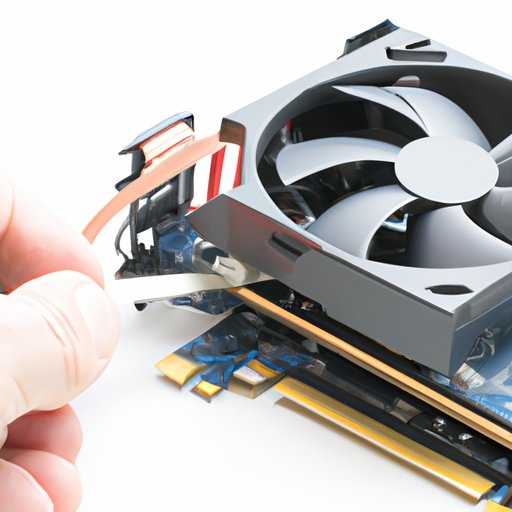
I. Introduction
Knowing what graphics card you have installed in your computer is important, especially if you are a gamer, graphic designer, or video editor. Identifying and understanding the specifications of your graphics card can help you determine whether your hardware is powerful enough to run certain games or software programs.
This article will provide a step-by-step guide on how to check what graphics card you have, why it’s important to know your graphics card specs, and how to troubleshoot and upgrade your graphics card if necessary.
II. Beginner’s Guide: Checking Your Graphics Card
The easiest way to check what graphics card you have is by using the Device Manager in Windows or the System Information tool.
Step 1: Click on the “Start” button on your desktop and type “Device Manager” in the search bar.
Step 2: Click on the “Display Adapters” category to expand it and view your installed graphics card.
Step 3: Double-click on the name of your graphics card to view more information about its specifications and driver details.
If you prefer to use a third-party software tool, there are many free and paid options available online. Some popular choices include CPU-Z, GPU-Z, and Speccy. These tools provide detailed information about your graphics card, such as the clock speed, temperature, and memory usage.
III. The Importance of Knowing Your Graphics Card Specs
Understanding the specifications of your graphics card is essential for several reasons. First, it allows you to compare graphics cards to determine which one is better suited for your specific needs. Some common graphics card specifications to consider include:
- VRAM: This is the amount of video memory on the graphics card, which determines how much texture, shading, and lighting information can be loaded at one time.
- Memory bus width: This measures the width of the transfer bus between the memory modules and the GPU, which affects the speed at which data can be transferred.
- Core clock speed: This refers to the speed at which the GPU core runs, which determines how fast the graphics card can process data.
Knowing these specifications can help you make an informed decision when upgrading or purchasing a new graphics card.
IV. Checking Your Graphics Card Performance
If you are a gamer, you want to make sure your graphics card is performing optimally. One way to do this is by using in-game benchmarks, which measure your graphics card’s ability to handle certain graphics-intensive tasks. You can also use third-party software tools like MSI Afterburner or FRAPS to monitor your graphics card’s performance in real-time.
When checking your graphics card’s performance, pay attention to the frame rate, or the number of frames per second (FPS) that are being displayed. A higher frame rate indicates smoother gameplay and better graphics performance.
V. Troubleshooting Graphics Card Issues
If you are experiencing performance issues with your graphics card, there are several steps you can take to troubleshoot the problem. First, make sure your graphics card drivers are up-to-date. Outdated drivers can cause hardware performance issues and compatibility problems.
If the problem persists, try reducing the graphics settings in your game or software program. Overloaded graphics settings can lead to laggy or sluggish performance.
If these steps do not solve the problem, you may need to consider upgrading your graphics card or seeking professional technical support.
VI. Upgrading Your Graphics Card
If you’ve determined that your graphics card is outdated and no longer meets your needs, you may want to consider upgrading to a newer, more powerful graphics card. Before purchasing a new graphics card, make sure to research the various options available and choose one that fits your budget and specific needs.
You should also make sure your computer meets the requirements for the new graphics card, such as having the correct ports and power supply capabilities.
VII. Keeping Your Graphics Card Updated
Keeping your graphics card drivers updated is important for maintaining optimal performance and compatibility with your system. You can check for and install the latest drivers by visiting the official website of your graphics card manufacturer. Some graphics card manufacturers also offer automatic driver updates through their software programs.
VIII. Advanced Techniques
If you are an advanced user or technical enthusiast, there are specialized software tools available for testing and benchmarking your graphics card. Some popular benchmarking software includes 3DMark, Unigine Superposition, and Heaven Benchmark. These tools can provide detailed information about your graphics card’s performance and help you optimize your hardware for certain tasks.
IX. Conclusion
Knowing what graphics card you have installed in your computer and understanding its specifications is essential for achieving optimal performance and compatibility with your hardware and software. By following the steps in this guide, you can easily check your graphics card, troubleshoot performance issues, and upgrade your hardware if necessary. Remember to keep your graphics card drivers updated and research your options carefully before making any upgrades.




